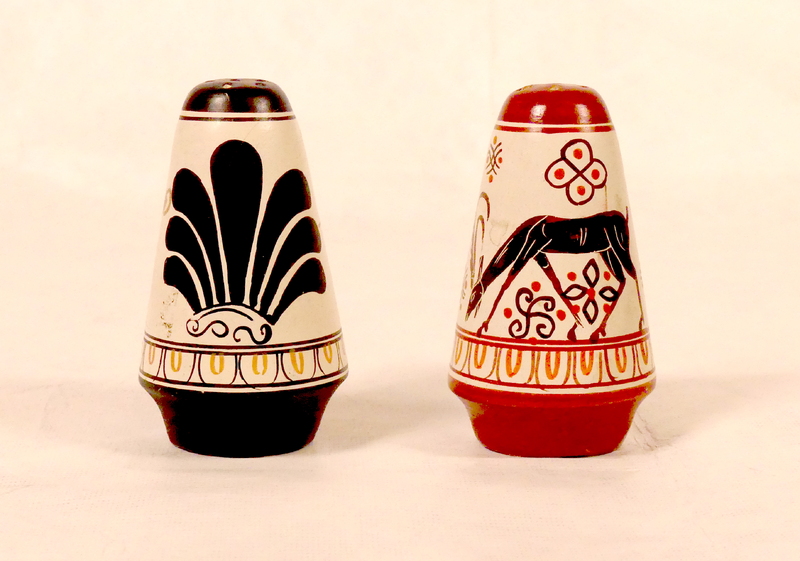Marion Steven
This set of ceramic Salt and Pepper shakers depict two different scenes in a reinterpretation of a Greek classical style. They were reportedly purchased by Miss Marion Kerr Steven (1912-1999) as teaching tools while she worked in the Department of Classics at the University of Canterbury, then known as Canterbury University College. They were likely purchased overseas during one of Miss Steven’s many trips abroad to visit archaeological sites or museums.
Miss Steven began her academic career as a student of medicine. She spent ten years at Otago Medical School before applying to a hospital in London to pursue medical research. However, after being initially accepted, she was eventually turned away as the Hospital only accepted males. Having decided to leave medicine, Marion enrolled at the then Canterbury University College to pursue her lifelong passion for Classics. After she graduated, her life at the University continued as a lecturer in Classics. She also married the University Registrar, James Logie, in 1950. During her time as a student and teacher of Classics, it appears Marion noticed that there was an opportunity to introduce artefacts as teaching tools into the curriculum. As a result, she began to purchase and develop a personal collection of antiquities which she shared with her students. In 1955, Marion also invested in a series of archaeological digs in Cyprus run by the University of Melbourne. In return, the University was gifted an allotment of the finds. Activities such as this would support her growing collection of antiquities. Marion’s own collection became the beginning of the James Logie Memorial Collection, which is today one of the best collections of Classical Antiquities in New Zealand.
The Salt and Pepper shakers were used as tools to demonstrate to students a particular style of pottery decoration, known as Rhodian ware. Steven believed handling objects to be vital in the learning of Classics, and one hopes that her students took the lessons very seriously and treated the shakers with the utmost care, even though they are perhaps not as precious as other objects in the Logie Collection. Today the shakers are still used to help students consider material culture and learn to examine every aspect of an artefact carefully. Students who initially think the salt and pepper shakers are ancient soon realise that the plastic stoppers underneath give their true age away!


